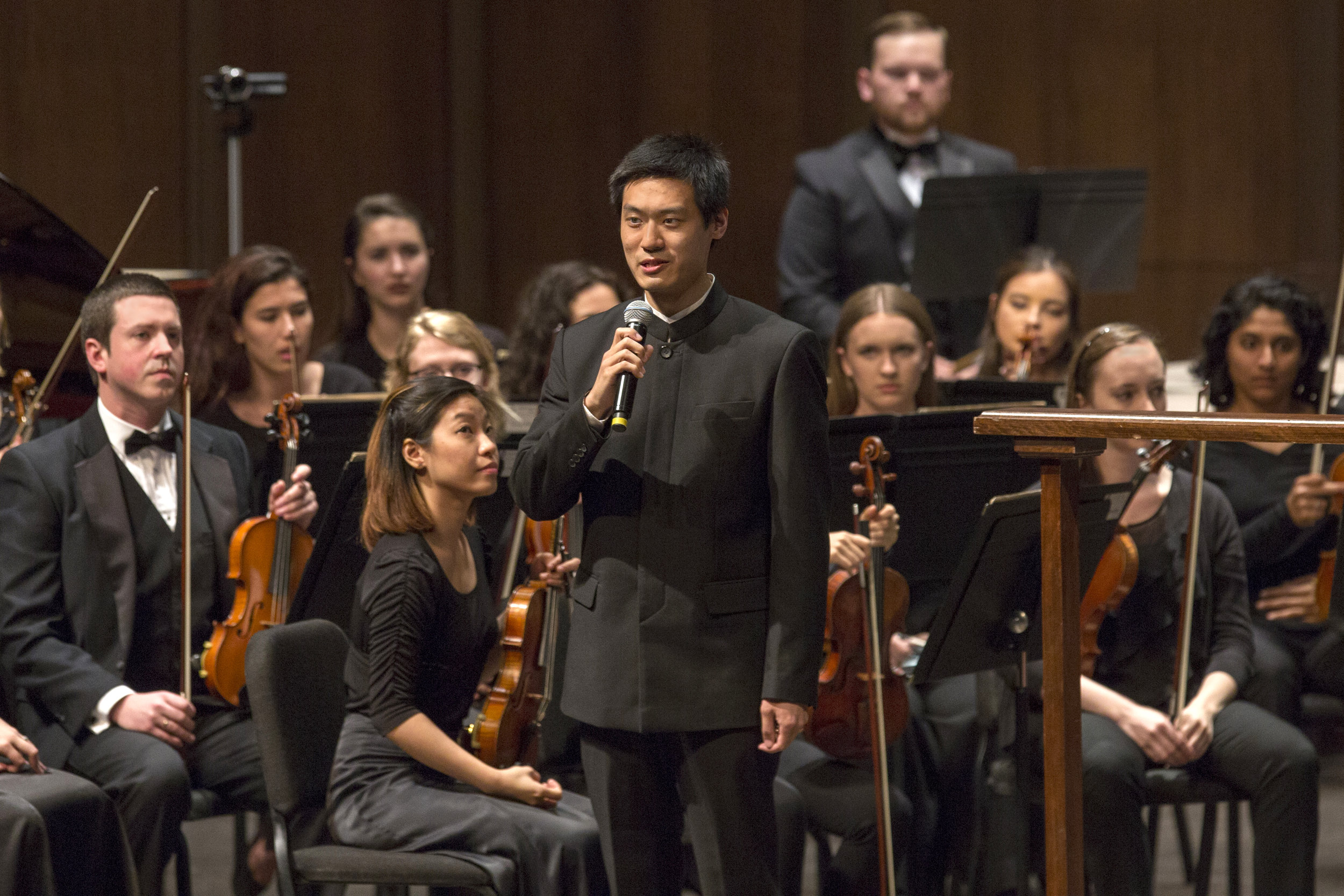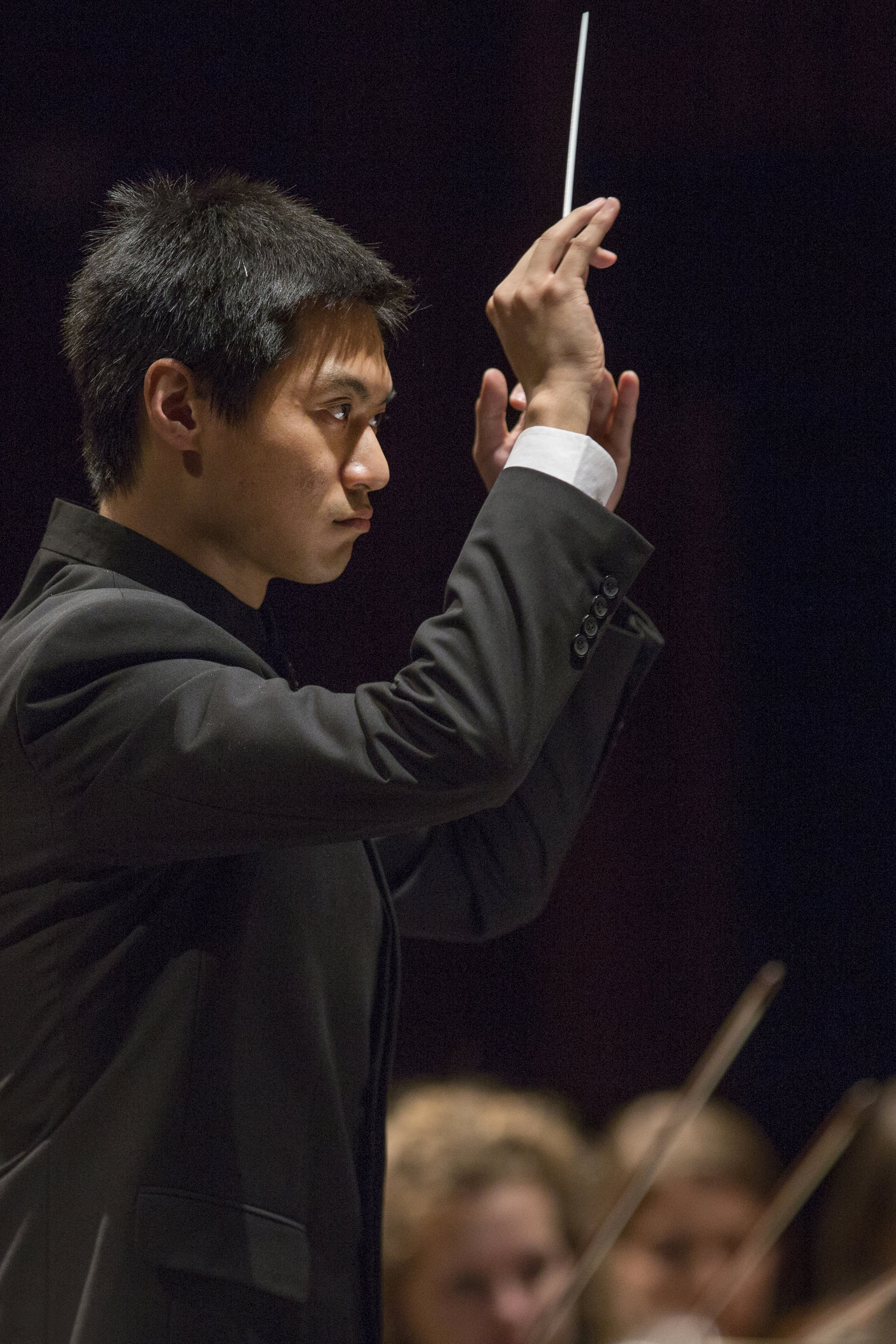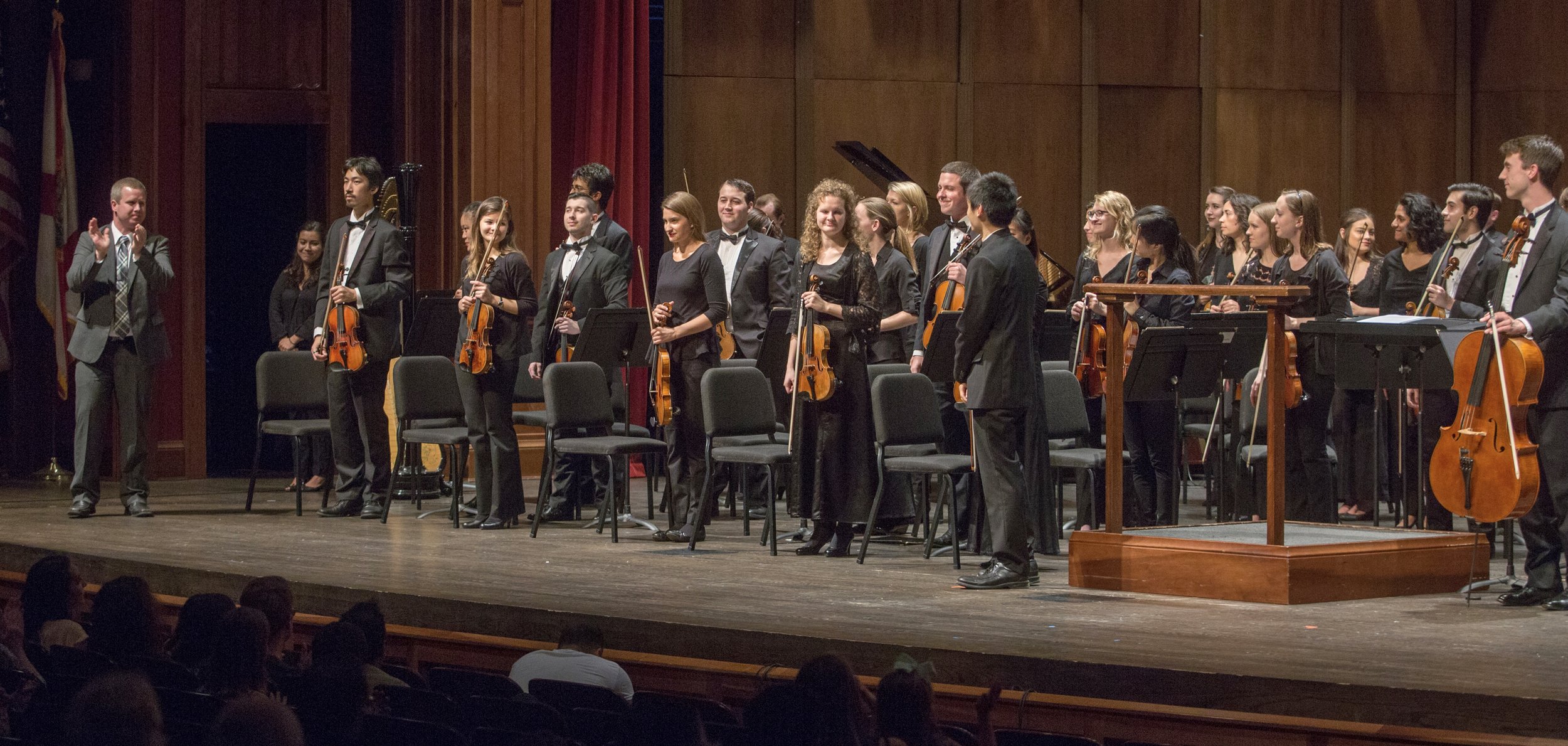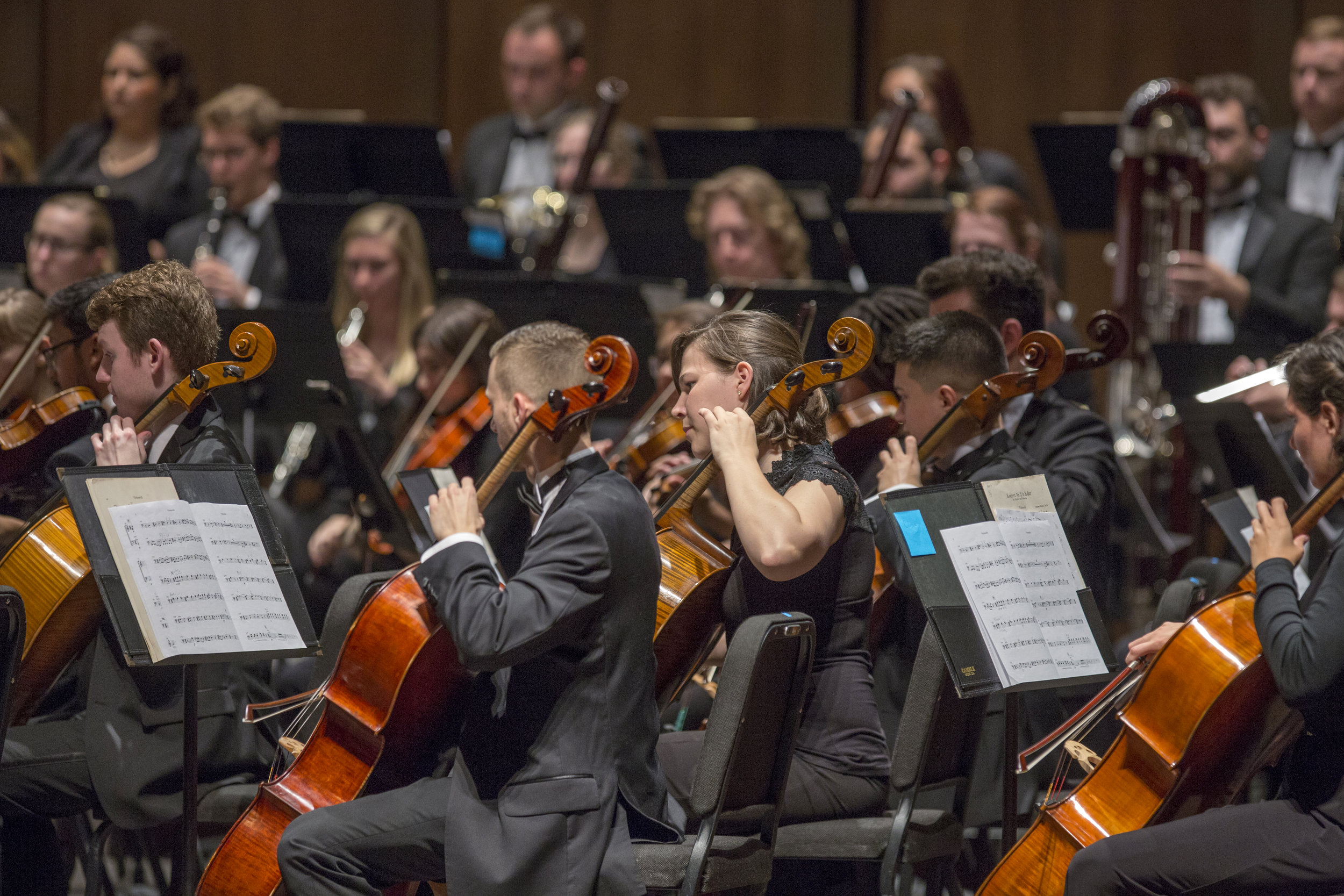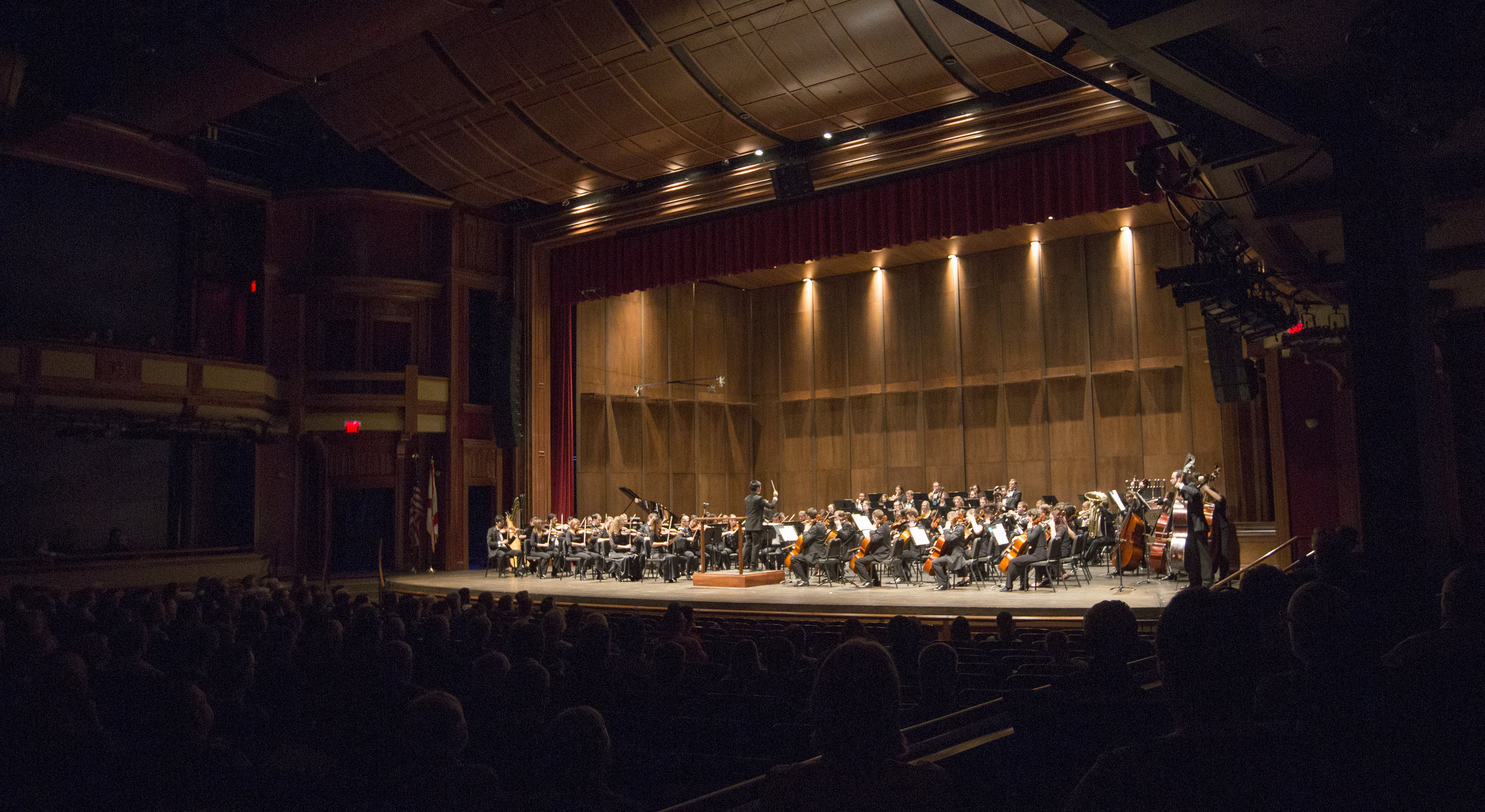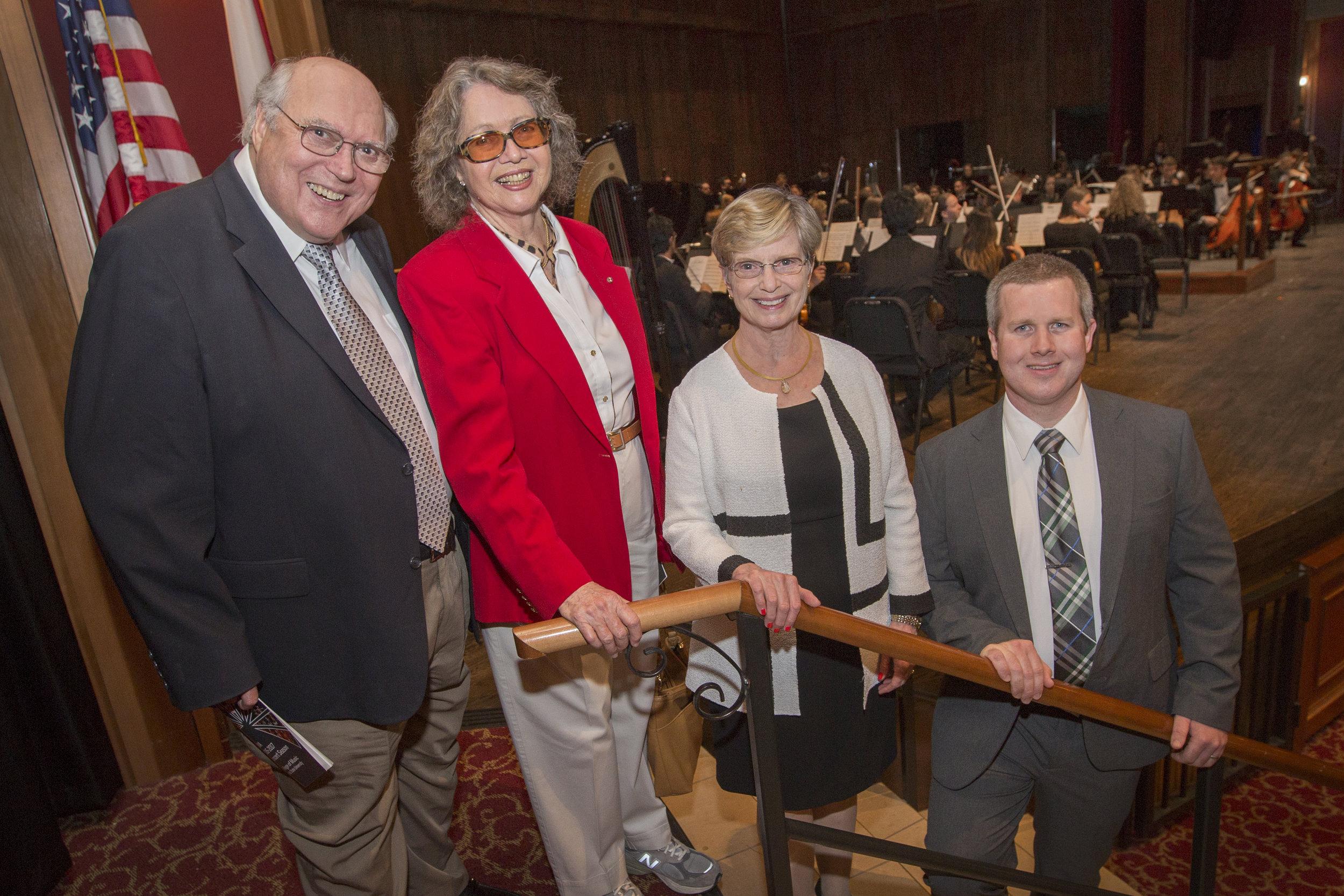
ORCHESTRA
Life for Life (2017)
Written in conjunction with the Florida State University 2015-2016 Ellen Zwilich Graduate Assistantship in Music Composition
Premiered April 21, 2017 by the Florida State University Symphony Orchestra conducted by James Chang
Program Note
This work is the culmination and capstone of my year-long experience as the first recipient of Florida State University's Zwilich Graduate Assistantship in Music Composition. Through this assistantship, I was able to immerse myself in the orchestral idiom during the 2015-2016 academic year by attending the weekly rehearsals of both the University Philharmonia Orchestra and the University Symphony Orchestra. My orchestral education was greatly helped by Dr. Alex Jiménez, graduate conductors, James Chang and Rachel Friedman, and the orchestral staff and players. This close and frequent contact with the orchestra provided me with the knowledge and tools that were the springboard for writing this piece.
Life for Life is a musical depiction of the salvation offered by Jesus Christ. On the one hand, the title implies a law: one life given in exchange for the redemption of another life which is lost—Christ’s life willingly given for the believer’s. On the other hand, it refers to Jesus’ life being the source of life for the believer. A concise programmatic narrative of the work is as follows: There is a law by a holy God (represented by persistent chords) that cannot be escaped or fulfilled. All human efforts fail, and brokenness, despair, and lament follow. However, in the seeming darkness, God’s grace in Jesus Christ works behind the scenes. When the music picks up tempo, there are two layers of analogy present: that of Christ’s human struggle in a broken and sinful world, and the struggle of the believer to come to, and live by, faith (with embedded elements of hope). As the musical tension builds, the original “law chords” return and grow in intensity. The building tension, culminating in an abrupt halt, represents Jesus taking on himself the law’s full requirements and penalty on behalf of the believer, when he died on the cross; and on the other analogous level, the believer coming to the end of themselves in a metaphorical death. What follows is an increasing hope and joy in the resurrection and gospel of Christ, leading to an eternity with Him.
Found Among the Rubble (2017)
Read and recorded at the 2017 Atlantic Music Festival
Sketch Book (2018)
Selected as a finalist in the Tampa Bay Symphony’s Call for Scores Competition
Read by the Tampa Bay Symphony conducted by Mark Sforzini on January 20, 2019
Program Note
Sketch Book is a collection of seven short movements conceptually derived from various art forms and definitions associated with the word "sketch."
I. Sketch In (0:00) seeks to embody the artistic process of realizing a visual concept into a tangible drawing. To the observer, what begins as separate abstract lines and shapes coalesces into something beyond the physical medium; the art comes to life.
II. Character Sketch (1:30) draws on the literary practice of fleshing out the basic profile of a fictional character as part of an author’s preparation for writing a story. I aimed to musically create a complex character with deep and ambiguous traits not readily discernable to the listener. Is the character sinister, or a misunderstood hero, or in denial? A “longer story” is needed to untangle the mystery.
III. Sketch Comedy (3:35) is a musical depiction of the theatrical art form, whose skits are typically based on the development of a single comedic theme. The music composed for this movement is aimed at expressing a simple conflict between two entities.
IV. Police Composite Sketch (5:47) is a dark portrayal of a witness’s description of a criminal to a police sketch artist. I began this movement by locating an authentic transcribed witness statement given to a police sketch artist, then recording myself reading it aloud, as though I were the witness. I then carefully dictated my reading, adjusting and converting it into a declamatory melodic line subsequently tailored for a solo violin. The movement ends with the suspect still at large.
V. Thumbnail Sketch (8:06) is substantially shorter and quieter than the other movements, as it portrays the practice of an artist making a small, rough sketch outlining the basic framework for a larger work of art. It functions as a transition between its adjacent movements, but also foreshadows the final movement.
VI. Escher Skesch (8:33) is a return and development of the opening movement's musical character. The title is a blend of two contrasting art elements: A tangible kids’ drawing toy, and the intangible, reality-bending art of M. C. Escher. These two elements meet in an exploration of the impossibility and conundrums of art. As a youngster using a drawing toy, I was unable to realize my ideas because of the device’s inherent mechanical challenges, although I enjoyed the fumbling experience. Escher's artistic depictions of looping staircases and interlocking positive and negative space could not physically exist in the real world, and I am captivated by it. Along these lines, this movement's music revels in expressing the impossible.
VII. Sketch Out (10:07) concludes Sketch Book, relating back to the first movement by contrasting the impetus motivating the sketching. Whereas Sketch In is about the physical manifestation of an idea, Sketch Out seeks to portray an artist’s ravenous inner compulsion to create. Sketch In is externally driven, while Sketch Out is fueled from within. The movement progresses according to the alternative slang definition of its title.
CHAMBER AND SOLO MUSIC
City Electric (2018)
I. Busy Intersection, Signals Dark
II. Light Drowns the Night Sky
III. Flicker and Surge
For two b-flat clarinets and bass clarinet
Commissioned by the Ambassador Trio; Patrick Englert, Jack Liang, Jeremy Ruth
Premiered on October 13, 2018 at the 2018 National Association of College Wind and Percussion Instructors Conference in Vancouver B. C.
Program Note
City Electric, commissioned by the Ambassador Trio, drew much of its inspiration from two sources. First, at the outset of writing the piece, I spent a good portion of time audiating (or daydreaming) clarinet music. My favorite ideas formed what was essentially a "bucket list" that I resolved to include in the piece. These ideas became the seeds for the main material of the composition. The second influence came from advice my composition teacher once gave me: that I not rely so heavily on typical, prefabricated formal structures, but be more free and dynamic with the overall shaping of my music. The title and movement names stem from my impression of the music's character, and are also intended to enhance the listener’s experience and connection with it.
Somewhere Between Thought and Feeling (2017)
For flute, clarinet, violin, cello, vibraphone, and piano
Written for the 2017 Atlantic Music Festival in Waterville, Maine
Premiered on July 13, 2017 by Brian Allred, Nick Walshe, Ludik Wojtkowski, Liz Kovalchuk, Tyler Cunningham, and Lior Willinger
Program Note
Somewhere Between Thought and Feeling is based on the work’s opening gesture (flute and clarinet) and its subsequent development. A strong secondary element that becomes more prominent as the piece progresses is inversional symmetry. The title was chosen according to the compositional method I used in creating the work. Until this piece, I have had a tendency to write music primarily from either an intellectual or intuitive approach. In this work, I aimed to make both the “head” and the “heart” equal partners in the creative process.
Origin Story (2019)
For low brass quintet: alto trombone, tenor trombone, bass trombone, euphonium, and tuba
Written for the Back Row Quintet
Recorded on May 2, 2019 in Tallahassee, Florida
Program Note
Origin Story draws its name from the common entertainment practice of telling a character's back-story, revealing the influences that formed the individual's identity and status as either a protagonist or antagonist. This piece is not intended to depict a specific narrative, but rather a general drama and atmosphere associated with its namesake. Like many sagas containing origin stories, the music's inception and culmination are fatefully connected.
A Loss for Words (2018)
For solo piano
Written for the 2018 Oregon Bach Festival Composers Symposium
Premiered July 8, 2018 by Caleb Wenzel
Program Note
This work, in its duel movements, seeks to depict two different ways words can fail in their fundamental purpose: communication. The first, based on the common phrase, “I can explain,” often comes with the apt connotation that the explanation that follows is a proud attempt to manipulate someone’s perception, rather than a sincere revelation of truth. The second, “I can’t explain,” contrasts the first in that it is often an honest, humble admission of one’s inability to convey an enigmatic reality. Words fail, both when spoken dishonestly, and when not spoken at all; they fail when someone hides the truth, or when the truth is simply hidden by itself.
Two Days' Bar Talk (2014)
For clarinet doubling bass clarinet, and marimba (5-octave)
Commissioned by Duo Rodinia, comprised of Jamie Wind Whitmarsh and Lisa Kachouee
Premiered Feb. 13, 2016 at the Society of Composers, Inc. Region VI Conference
Program Note
Two Days' Bar Talk is derived from compositional sketches originally drafted a number of years apart. When envisioning the piece in the early stages of the writing process, I had an epiphany that these unused and separately conceived ideas had a common character somewhat reminiscent of Bartok. I subsequently employed them in pursuit of this connection, composing them out and tying them together with music that altogether framed a rhythmically driven and dynamic musical form. Thus, the title, whose surface meaning may allude to the boisterous atmosphere of a bar for "two days" (outer sections, which are separated by a slower "late night" section), also has a phonetically derived, and more apt, second meaning: today's Bartok.
Inter- (2014)
For flute, clarinet, violin, and piano
Premiered Nov. 16, 2014 at Florida State University by Laura Clapper, Michael Spicer, Marisa Votapek, and Paige Li, conducted by Aaron King Vaughn
Program Note
I chose the title, Inter-, for this composition, because it aptly sums up in a common prefix the main features of the work, which include: interspersion, interruption, interpolation, inter-connection, and interaction. After the exposition of the main theme and a limited amount of supporting material, the above-mentioned factors are “interduced”, being heavily applied and developed throughout the duration of the piece. An extensive exhaustion of these elements finally leads the material to be laid to rest--or rather, interred. Regardless of how the listener may interpret the performance, I hope that it is ultimately of interest. I unabashedly admit that the music is obsessively saturated with the concept (as are these notes), so take heed, and Inter- at your own risk.
String Quartet (2014)
Premiered July 30, 2016 in Lviv Ukraine by Petro Titiaiev, Dmytro Les'ko, Zharkovsky Roman, Dmytro Nikolaev, conducted by Roman Kreslenko
Finalist in the 2016 Bruno Maderna Composition Competition
Program Note
This string quartet is an adventurous theme and variations that explores elemental gestures through repetition and transformation, which occur on both the surface and formal levels. The work is subtly partitioned into two uneven halves, the first consisting of approximately a third of the piece. This initial section is a more traditional application of the theme and variations form, employing a frequent periodicity of the two main phrases, which are interspersed with corollary material. The subsequent larger second half contrasts structural-level cycling and development of material derived from the first half, with local-level repetition and fluctuations. These larger cycles, themselves, consist of two halves, beginning with very lively and active music, followed by much slower droning music. The second half of the third cycle is also the ending, combining the previous drones with various statements of the opening two phrases, thus bringing the work’s gestural excursions to a close.
